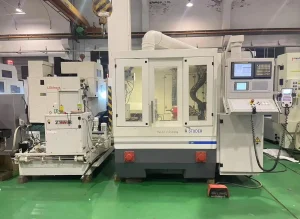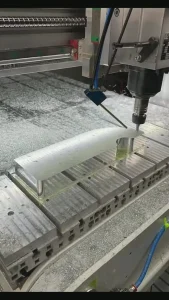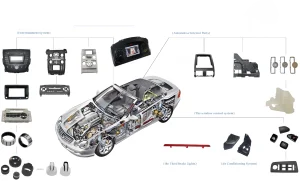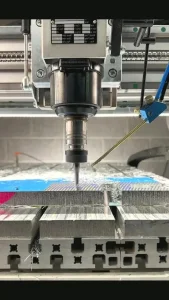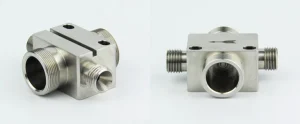CNC Swiss-type machining centers, a sliding headstock automatic lathe that has become increasingly popular in recent years, offer versatile capabilities, including:
- Turning external diameters, cones, arcs, and curved surfaces
- Machining internal and external threads
- Milling slots, slotting, and spiral grooves
- Drilling and boring holes
- Tapping holes and engraving
- Knurling
These machines typically handle materials ranging from 2mm to 20mm in diameter, though larger models are available. Per esempio, the Japanese brand Nomura Swiss-type CNC machines introduced by RapidEfficient can process materials with diameters up to 25mm.
Swiss-type machines can also process irregularly shaped profiles such as hexagonal, piazza, and triangular bars. They offer:
- High precision
- Wide applications
- Exceptional versatility
They are ideal for high-volume, high-variety, and high-precision machining of long, thin shafts and small, complex parts. Industries that benefit include:
- Medico
- Aviation and aerospace
- Military
- Automotive and motorcycles
- Communications
- Refrigeration and optics
- Home appliances and electronics
- Microelectronics, watches, and mobile phones
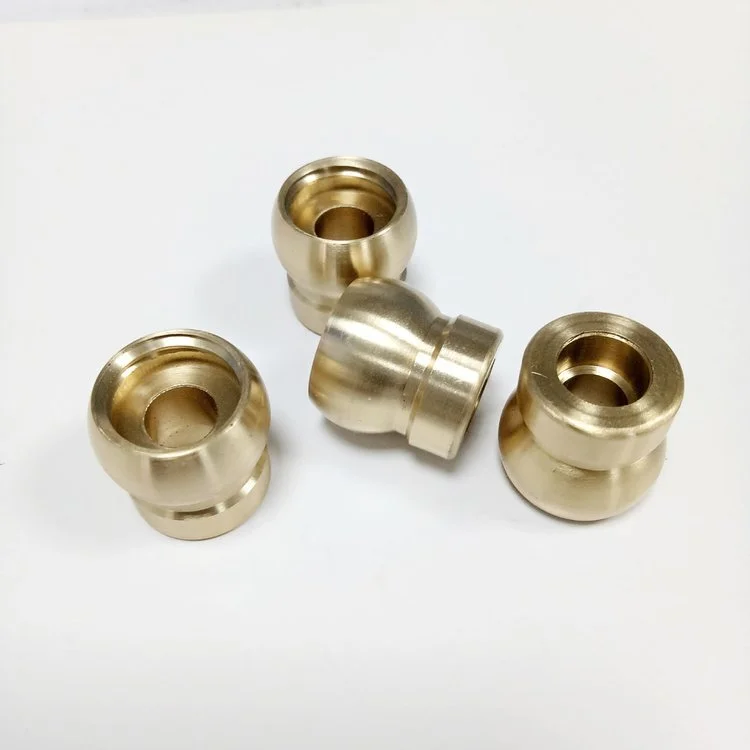
Improved Efficiency and Precision
CNC Swiss-type machining centers represent a qualitative leap in efficiency and accuracy compared to conventional CNC lathes.
- Dual-row tooling significantly shortens cycle time
- Reductions are achieved through:
- Tool shortening
- Multi-tool station overlap
- Thread chip effective axis movement overlap
- Direct spindle machining
The tool always operates between the spindle and the workpiece, ensuring consistent machining accuracy.
Main Advantages of CNC Swiss-type Machining
- Shortened Manufacturing Process Chain
- Milling and turning can complete all or most steps in a single operation.
- Significantly reduces the overall production process chain.
- Reduced Clamping, Improved Accuracy
- Fewer clamping times minimize errors caused by datum conversion.
- Lower Production Costs, Smaller Footprint
- Although unit machine cost is high, the process chain reduces the need for additional equipment, infissi, and workshop space.
- Lowers equipment maintenance and management costs.
- Effectively reduces total fixed asset investment.
Performance Features
- Simultaneous machining on spindle side and shaft end
- Rear toolholder equipped with Y-axis → synchronized machining front & back
- Flexible choice of guide sleeves or unguide sleeves depending on workpiece
- New software → shorter cycles, higher accuracy, easier operation
- Rapid rate control, commanded cutting feed, adjustable machining programs
- Embedded power head → enables machining of front and rear eccentric holes
- High-speed power head (up to 12,000 min⁻¹ depending on model) → faster drilling of small-diameter holes
- Automatic programming software
- Enhanced bed and tool rigidity → improved cutting capacity
- Increased transverse power head speed → stronger scraping performance
Why Choose Swiss-type Over Conventional CNC Lathes?
For precision parts with small diameters and long lengths, Swiss-type machining offers far superior performance compared to conventional CNC lathes:
- Unique structure reduces vibration of raw material
- Supports simultaneous completion of multiple processes
- Combines efficiency with unmatched precision
RapidEfficient has imported over 30 CNC Swiss-type machines from Japan, enabling:
- Rapid and precise machining of aluminum alloys, stainless steel, carbon steel, free-cutting materials, and copper alloys
- Meeting the high-standard component requirements of medical, aerospace, automobile, electronics, and other industries

